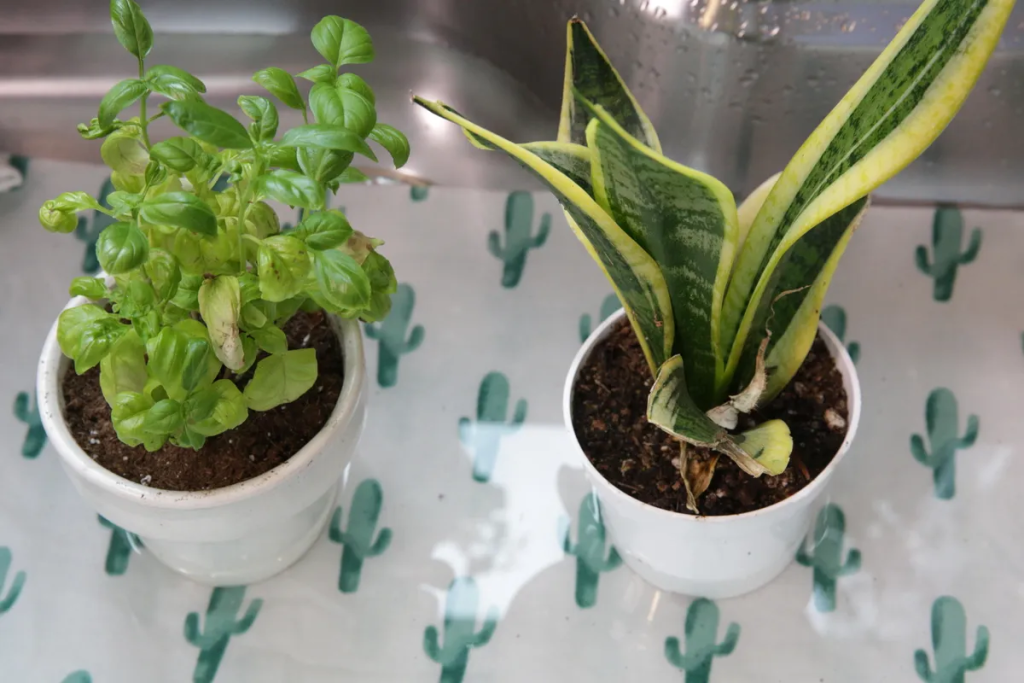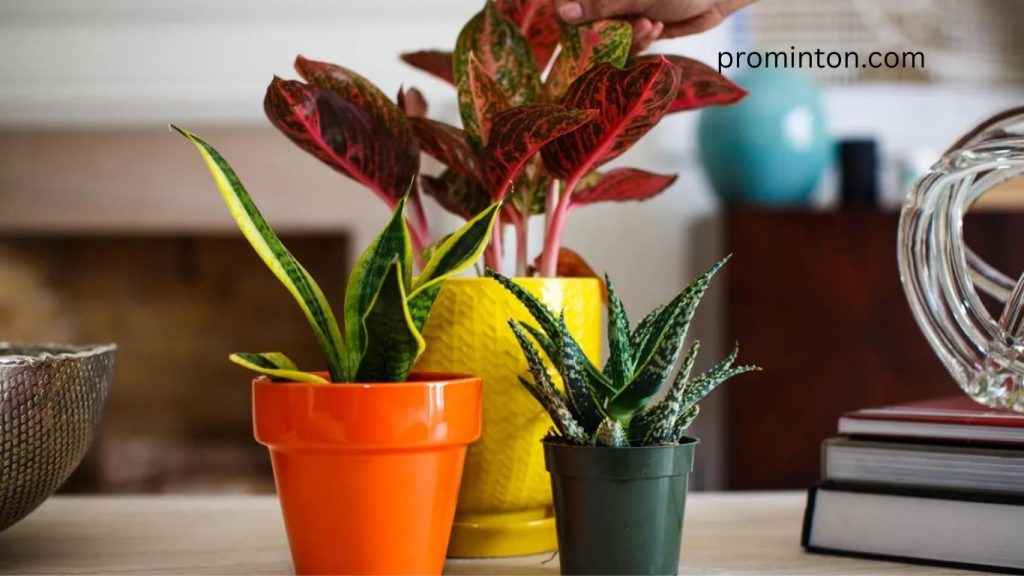Leaving your plants unattended—even for a few days—can stress them, but it doesn’t have to. If you’ve cultivated an indoor garden you love, simple techniques can keep your greenery flourishing while you enjoy vacations or short trips. From DIY watering solutions to mini-greenhouses, these methods ensure your plants stay hydrated and healthy, no matter how long you’re away.
Many indoor plants require daily watering, including herbs, vegetables, ferns, and ficuses. Succulents, however, prefer to be left alone and need less frequent attention. Before using these methods, identify which plants need consistent care and which can handle a break.
Read More: 2026 Kitchen Design Trends: 5 Game-Changing Insights to Transform Your Home Into a Stylish Haven
Here are four proven ways to keep plants alive while you’re out of town:
Turn a Plastic Bag into a Mini Greenhouse
Using a clear plastic bag as a greenhouse might seem unusual, but it works particularly well for longer vacations. Here’s how:
- Choose a bag large enough to cover the plant and pot.
- Add stakes to prevent the bag from clinging to leaves. Minimal contact is acceptable, but avoid pressing the bag tightly against delicate foliage.
- Water the plant normally, ensuring it’s moist but not waterlogged.
- Place the plant inside the bag and blow a bit of air to create space around the leaves.
- Position the plant in indirect sunlight—direct sun can overheat the bag and harm the plant.
- This mini greenhouse traps moisture as it evaporates, allowing water to drip back into the soil and keeping your plants hydrated naturally.
- Use the Water Wicking Method
- Water wicking is a reliable and low-maintenance solution for indoor plants. You’ll need a water container and a cotton rope or clothesline.
- Cut a rope long enough to reach from the water container to the soil.
- Insert one end of the rope several inches into the soil near the plant without disturbing the roots.
- Place the other end in a container filled with water, ensuring the rope touches the bottom.
The rope will slowly draw water into the soil, maintaining consistent moisture while you’re away. This method is perfect for small pots, herbs, and houseplants that require steady hydration.
Create a DIY Drip System

Instead of purchasing glass watering globes, you can make a simple drip system using a plastic bottle:
- Drill small holes near the top of an empty bottle.
- Water your plant normally before you leave.
- Fill the bottle with water and insert it upside down into the soil. Ensure the holes are covered by soil and the bottle is not too close to the plant.
- The water will gradually seep out, keeping the soil moist for days. For larger pots, an inverted wine bottle works just as well. This method allows for controlled watering without daily supervision.
Give Your Plants a “Bath”

For pots with good drainage, you can use a sink or bathtub to keep plants hydrated:
- Fill the sink or tub with a few inches of water.
- Place a towel at the bottom to prevent scratches and rest your pots inside.
- The soil will naturally absorb water, keeping roots hydrated for up to a week.
Ensure the lighting near the sink meets your plant’s needs—avoid placing sun-loving plants in dark bathrooms. This method is especially useful for short trips and plants with moderate water requirements.
Houseplants That Purify the Air
Beyond hydration, certain indoor plants enhance your home environment by filtering toxins and improving air quality. While modern studies suggest hundreds of plants are needed for significant purification, adding a few strategic species can boost comfort and aesthetics:
- Marble Queen Pothos (Devil’s Ivy) – Nearly impossible to kill, this plant absorbs VOCs like formaldehyde, benzene, and toluene. It thrives with minimal care, requiring watering only every 7–10 days.
- Peace Lily (Spathiphyllum) – Excellent for low-light areas, it removes formaldehyde, benzene, and carbon monoxide from the air.
- English Ivy (Hedera helix) – Reduces airborne fecal matter and absorbs formaldehyde, but keep it away from pets.
- Gerbera Daisy (Gerbera jamesonii) – Filters trichloroethylene and benzene while adding vibrant color. It requires plenty of sunlight and frequent watering.
Houseplants can also help regulate humidity, deter pests, reduce allergens, and elevate mood, making them a natural addition to any home.
Distilled Water: A Safe Solution for Plants and Devices

Keeping a supply of distilled water at home is practical for emergencies and daily plant care. Unlike tap or filtered water, distilled water is free from minerals and impurities. This makes it ideal for:
- CPAP machines and humidifiers
- Cleaning wounds and medical devices
- Aquariums, houseplants, and delicate flowers
While distilled water lacks minerals like calcium and magnesium, it’s safe for plants and certain appliances. You can purchase it at most grocery stores or make it at home, which is both cost-effective and environmentally friendly.
How to Make Distilled Water at Home
Creating distilled water involves turning tap water into vapor and condensing it into a pure liquid. You’ll need:
- Large pot with lid
- Small pot
- Water and ice
- Oven mitts
Steps:
- Fill the large pot with water and float the smaller pot inside.
- Place the lid upside down on the large pot.
- Heat the water to a simmer (180–200°F).
- Add ice to the top of the lid to accelerate condensation.
- Collect the distilled water that drips into the smaller pot.
This process produces bacteria-free water suitable for plants, devices, and emergencies. For larger quantities, extend distillation time as needed.
Preparing Your Home for Emergencies
Maintaining a supply of distilled water is not just for plant care. In situations like storms, blackouts, or other disruptions, having clean water on hand ensures safety and convenience. Distilled water can also prevent mineral buildup in appliances and protect your hair and skin from hard water effects. Proper storage in glass or stainless steel containers prolongs shelf life.
Frequently Asked Questions:
How does using a plastic bag help keep plants alive while I’m away?
A clear plastic bag acts as a mini-greenhouse, trapping moisture and humidity around the plant. This reduces water loss and keeps the soil consistently damp, helping your plant stay healthy for several days.
Can I use this method for all types of indoor plants?
This technique works best for plants that need regular watering, such as herbs, vegetables, ferns, and ficuses. Succulents, cacti, and other drought-tolerant plants do not require this method and may suffer from overwatering.
How should I set up the plastic bag to avoid harming the plant?
Place stakes or sticks in the pot to prevent the bag from pressing directly on leaves. Water the plant normally, then carefully cover it with the bag, leaving a bit of air inside to create space and prevent leaf damage.
Where should I place the bagged plant?
Keep your mini-greenhouse in a location with indirect sunlight. Direct sunlight can overheat the bag and damage the plant. A bright, shaded spot near a window usually works best.
How long can a plant stay inside a plastic bag?
Most plants can remain covered for several days up to a week, depending on the species and room temperature. Check the soil moisture before leaving to ensure the plant starts hydrated.
Are there alternatives if I don’t want to use a plastic bag?
Yes! You can use water wicking, DIY drip systems, or plant baths to keep plants hydrated while you’re away. These methods are especially useful for longer vacations or larger plants.
Can I reuse the plastic bag method for multiple trips?
Yes, as long as the bag is clean and undamaged. Always check for mold or excessive condensation before reusing it.
Conclusion
Keeping your indoor plants healthy while you’re away doesn’t have to be stressful. Simple solutions like using a plastic bag mini-greenhouse, water wicking, DIY drip systems, or plant baths can ensure your plants stay hydrated and thriving. Pair these methods with air-purifying houseplants and a steady supply of distilled water, and your home will remain vibrant, fresh, and well-cared-for. With a little preparation, you can enjoy your time away with confidence, knowing your beloved greenery will welcome you back healthy and flourishing.



